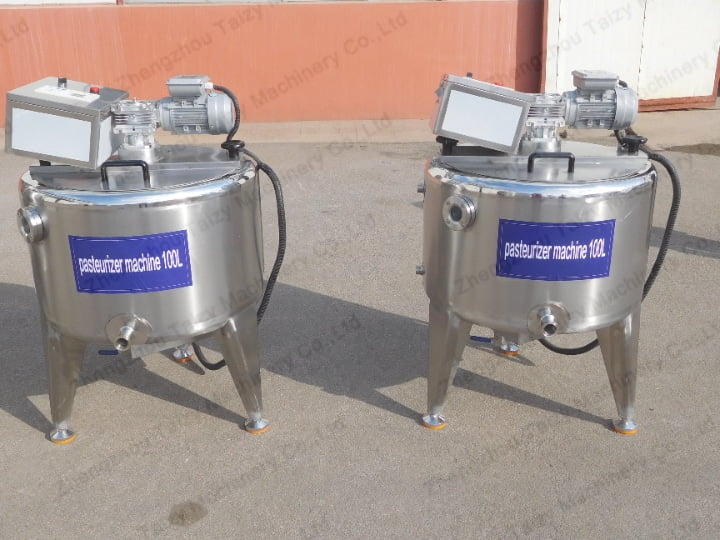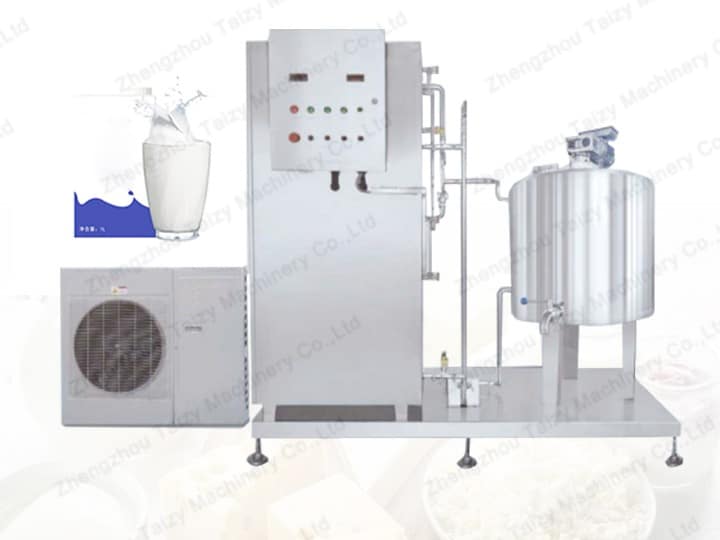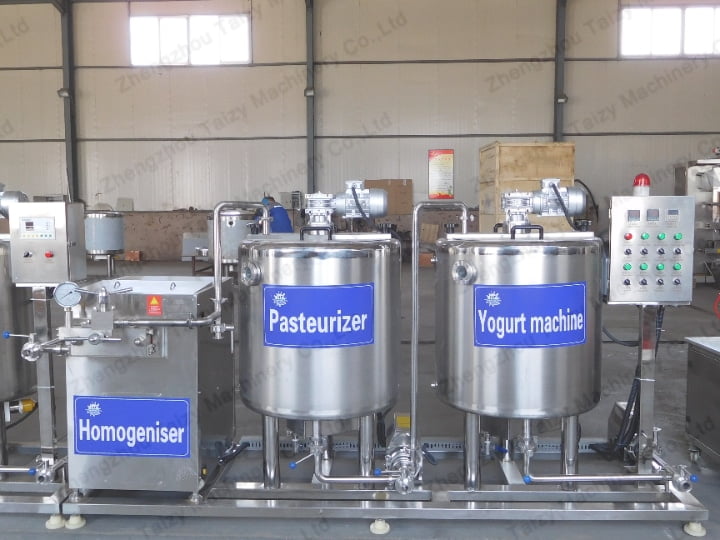Viele Verbraucher, die Milch kaufen, konzentrieren sich nur auf das Verzehrdatum, aber tatsächlich ist die Art und Weise, wie das Getränk sterilisiert wird, ebenso wichtig. Sie bestimmt nicht nur die Haltbarkeitsdauer und Lagerungsmethoden des Produkts, sondern beeinflusst auch seinen Geschmack und sogar den Wasserverlust. lösliche Vitamine.
Pasteurisierungsmethode für die Verarbeitung von Milch

Aufgrund der unterschiedlichen Sterilisationstemperaturen gibt es zwei Arten von Produkten: „konventionelle Pasteurisierung“ und „Ultra-Pasteurisierung mit verlängerter Haltbarkeit“. Erstere hat eine Haltbarkeit von etwa 2 bis 3 Wochen und hat geringere Auswirkungen auf die Nährwerte und den Geschmack von Milch; letztere hat eine Haltbarkeit von 30 bis 90 Tagen. Die meisten Joghurtherstellung heute verwendet die Pasteurisierung.
So lagern Sie Joghurt nach der Pasteurisierung

Pasteurisierte Milch oder Milchgetränke werden in Giebelkartons oder Glasflaschen bei 4 °C oder weniger gelagert und haben eine Haltbarkeitsdauer von etwa 2 bis 3 Wochen. Da die verwendete Sterilisationstemperatur niedrig ist, hat dies nur geringe Auswirkungen auf den Nährstoffverlust und die Geschmacksveränderung der Milch. Allerdings ist das Getränk nicht vollständig steril, nur dass jeder Milliliter Getränk nicht mehr als 30.000 Bakterien enthalten sollte. Wenn die Temperatur des Wagens während des Transports zu hoch ist, zu lange bei Raumtemperatur belassen wird oder die Gefriertemperatur nicht niedrig genug ist, haben die Bakterien in der Milch die Möglichkeit, sich zu vermehren und zu vermehren.
Ultrahochtemperatur-Sterilisationsverfahren für Milch

Es kann in die Ultrahochtemperatur-Sterilisationsmethode und die Sterilisationsmethode im Gefäß unterteilt werden. Ersteres ist häufiger anzutreffen, da die Milch auf mindestens 132 °C erhitzt und mindestens eine Sekunde lang dort gehalten wird, um eine große Anzahl von Bakterien abzutöten und die Bakteriensporen inaktiv zu machen. Auf Lagerzeit, Geschmack und Nährwert muss geachtet werden.
Aufbewahrungsmethoden für ultrapasteurisierte Milch

Ultrapasteurisierte Milch oder Milchgetränke können bei Raumtemperatur 6 bis 9 Monate bei höheren Temperaturen gelagert werden. Allerdings verändern die chemischen Wirkungen von Aminosäuren und reduzierenden Zuckern in den Getränken den Geruch, die Textur und den Geschmack der Milch, was zu einem gekochten, nussigen oder karamellisierten Geschmack führen kann. Darüber hinaus reagieren wasserlösliche Vitamine wie Vitamin C, Vitamin B12 und Folsäure empfindlicher auf Hitze, und eine längere Lagerung kann auch das Risiko einer Vitaminoxidation erhöhen. Durch die Ultrapasteurisierung verliert die Milch etwa 10-15% ihrer Vitamine

Sterilisation von Milch im Gefäß
Bei der Sterilisation im Gefäß wird das Getränk mit dem Behälter auf mindestens 100 °C erhitzt und dort mindestens 25 Minuten lang gehalten.
Lagerungsmethode zur Sterilisation im Gefäß
Die Sterilisation im Gefäß kann bis zu 12 Monate gelagert werden. Der durchschnittliche Vitaminverlust in Milch, die mit der Methode der Gefäßsterilisation behandelt wurde, beträgt etwa 40%.
Wie lässt sich Milch besser pasteurisieren?

Obwohl einige Vitamine in Milch oder Milchgetränken, die mit verlängerter Haltbarkeit ultra-pasteurisiert und sterilisiert wurden, verloren gehen, hat dies geringe Auswirkungen auf den Nährwert einer ausgewogenen Ernährung. Daher können pasteurisierte oder sterilisierte Produkte als Teil einer gesunden und ausgewogenen Ernährung verwendet werden.
